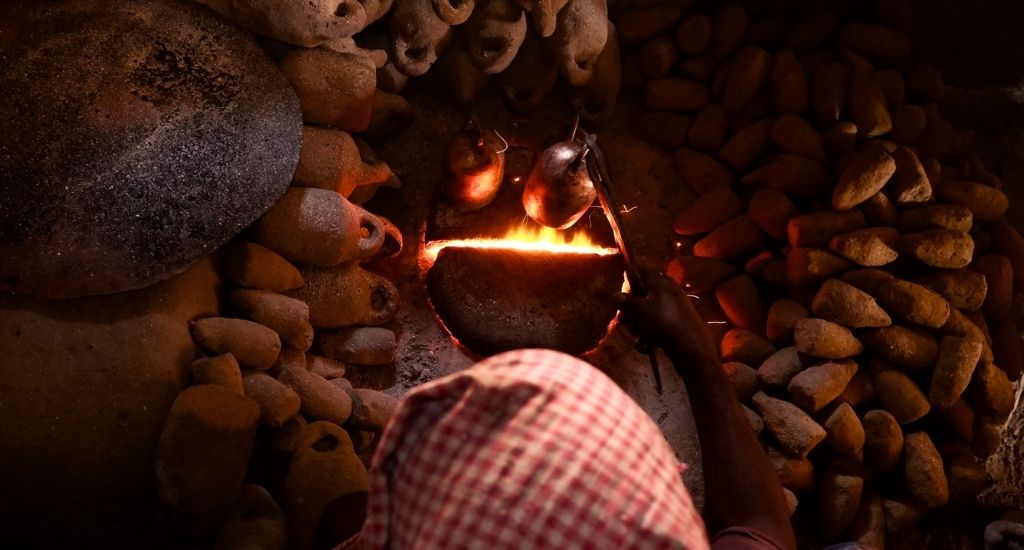
Die cast for vanishing cowbells of Jharkhand
Blacksmiths practising the ancient art form of making cowbells are struggling to make ends meet as sales have dipped, with rural folks keeping fewer cattle now.

Blacksmiths practising the ancient art form of making cowbells are struggling to make ends meet as sales have dipped, with rural folks keeping fewer cattle now.
A chorus of clangs and bangs rings out of a village blacksmith’s modest cob house in Jharkhand’s Palamu district as each member of the family hammers away on their work. The clangorous noise is so unlike the tinkle of the cowbells they are making.
Tuesdays are the busiest day for the family of five as they have to get a batch of bells ready for the weekly market held on the next two days at Garhwa, about 20 km from where they live, the village of Baraon – a five-hour drive westward from Ranchi.
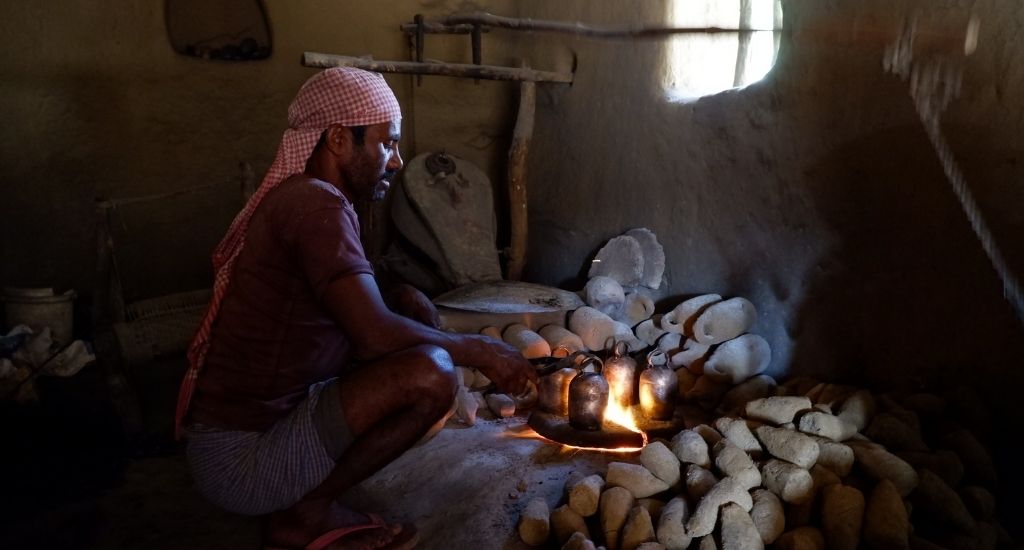
They work in silence, each labouring in practised choreography. At 13, Aryan Vishwakarma is the youngest. He skipped school to lend a hand. The oldest is the family’s patriarch, 82-year-old Mathura Vishwakarma, who knows the ins and outs of forges, anvils, hammers and other assorted tools of the trade like the back of his hand.
But it’s the furnace where it all comes together. Called bhatti, the furnace occupies the hot seat in the pecking order of heirlooms. It has been around for generations.
Sweat drips down 35-year-old Avanti Devi’s face as she carries out the onerous task of feeding the blazing bhatti with charcoal and fanning it constantly to keep the heat at the melting point of steel.
Her husband Antu Vishwakarma, 42, places a batch of clay moulds in the furnace. A single batch contains 20-25 small bells, about 15 medium-sized bells, and one or two big ones.
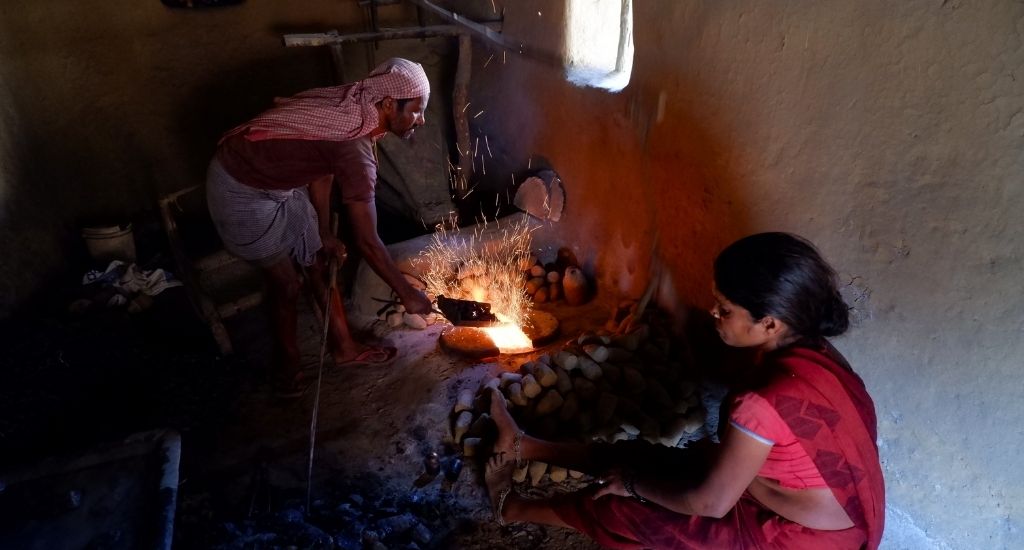
“A well-heated furnace can produce a batch in 30 minutes,” said Avanti, wiping her face with the end of her sari and switching the fan from one aching hand to the other. When the pain and heat become unbearable, son Aryan takes her place.
Also Read | Bell metal fires fading out in Assam
“We have to work in the furnace till 10pm today,” Avanti said, nervous about the pressing deadline. “We do this throughout the year. You can’t stand here in the summer.”
It’s not hard to imagine hell when the tropical sun and a coal-fired foundry compete in a fiery contest.
Antu buys old drums made of rolled steel sheets from a scrap metal dealer. These are cleaned, hammer-pressed back into sheets, and then cut using a local scale, called farma, which has fixed measurements for 10 varying sizes of bells.
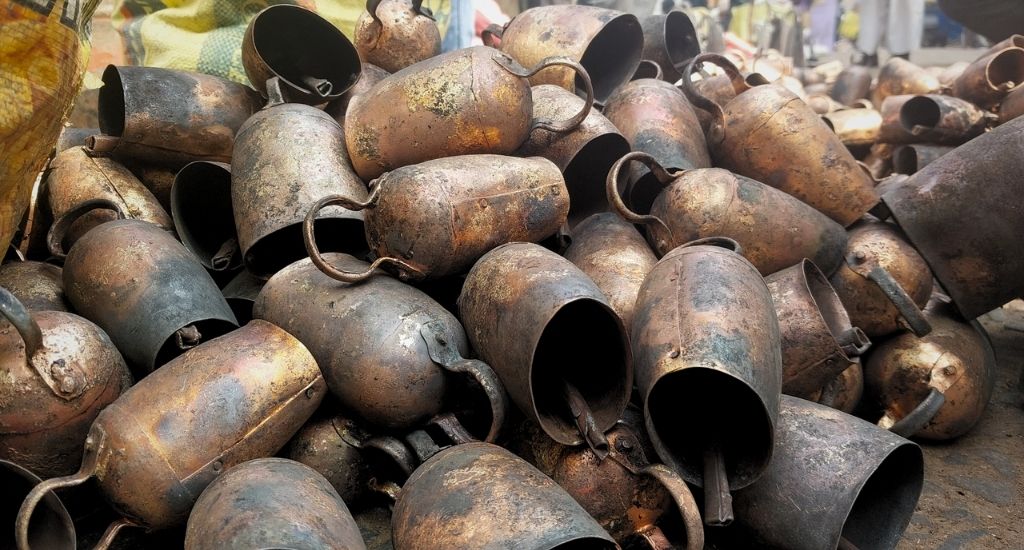
More hammering follows as the pieces are shaped. Brass and borax are applied to them before they are put in clay moulds. The furnace comes next. No stopwatch or timer tells Antu when to take them out from the fire.
Once he’s sure they are cooked, he brings them out with an iron rod. They are laid out to cool and then dunked in water. The packed clay comes off, revealing the jewel for a cow’s neck. The clanger is fitted last.
“If the cattle wear big-sized bells, you can hear the clanging from that hill,” said Avanti, pointing to a hillock about 500m from her home.
The sound of cowbells are distant and rare these days. The bells were considered a symbol of prosperity in the countryside not so long ago. They served a practical purpose too, as a navigational tool to locate cows and bulls foraging in vast pastures, or to identify them from other herds.
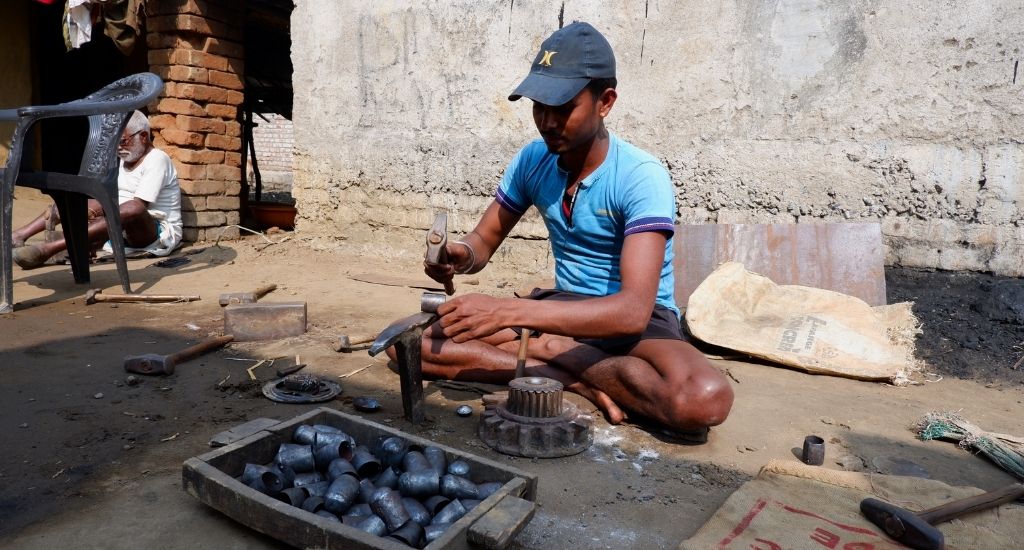
Rural life is tough, and livelihood options are but a few. Many people migrate to the cities in the hope of a better life. This is cited as a reason for rural folks keeping fewer cattle now.
“There are not many cattle in the village,” said Mathura, who had 10 heads of cattle before, but now keeps only two.
He recalled a time when almost everyone in his village used to make cowbells. Only a few continue to labour at the ancient art form now. The Vishwakarmas are from the Lohar caste. Lohar means blacksmith, a trade they have been associated with for ages.
Also Read | Jharkhand’s tribal women make natural cups and bowls but find no takers
Of his five sons, two and a grandson have migrated to Chennai.
“What will a man do if he does not get money? Won’t he go find some work?” Mathura asked.
Avanti and Antu’s neighbour, Ramanand Vishwakarma is a B.Sc second-year student. He is 22 and a seventh-generation blacksmith.
“This is the last generation. I am doing it only until I get a job. You have to be nuts about this job to do it. It’s not for everyone,” he said.
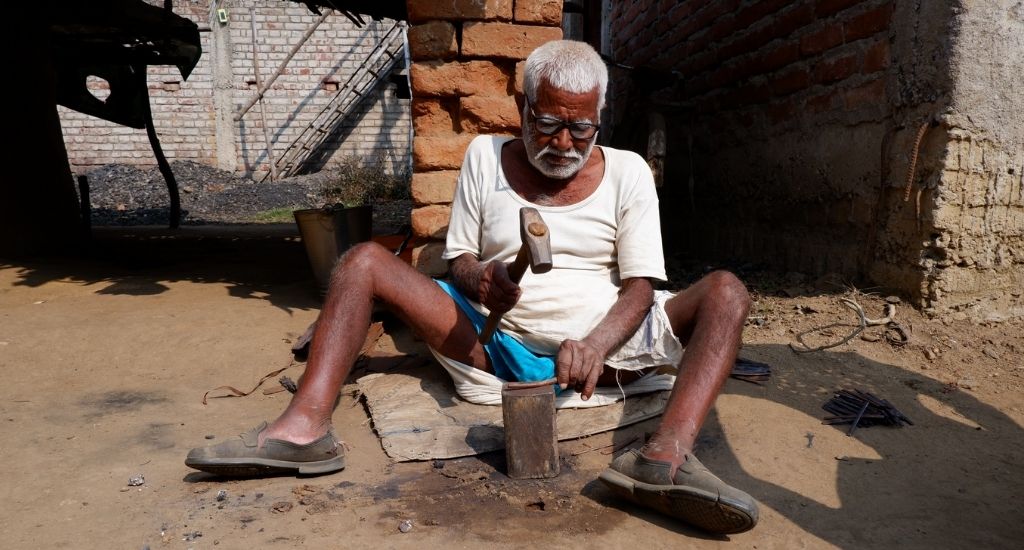
Avanti can see the ominous signs.
“There is no income. And this takes a lot of hard work,” she said, wondering if their ware “will be sold or not tomorrow”.
The family has made a bundle of around 150 bells for the weekly market.
“This will fetch us Rs 3,000… if we sell it all,” said Antu. “A daily wage labourer earns more. But how can people of our caste do odd jobs? What will people say?”
Despite a loss of productivity with age, his father Mathura is still at it.
“It’s a job that I love and I never plan to abandon it,” he said.
The lead image at the top shows Antu heating a bell in the furnace (Photo by Ashwini Kumar Shukla)
Ashwini Kumar Shukla is a journalist based in Jharkhand. He is an alumnus of the Indian Institute of Mass Communication and writes about rural India, gender, society and culture.